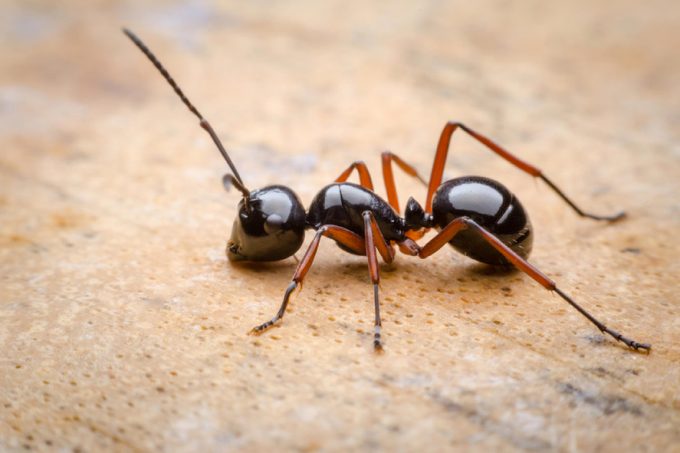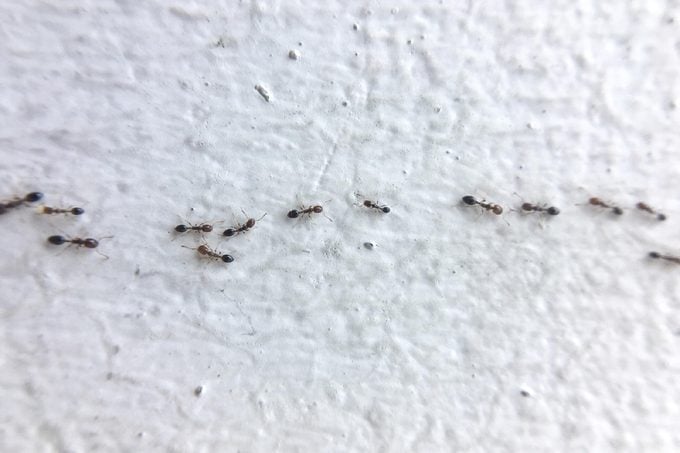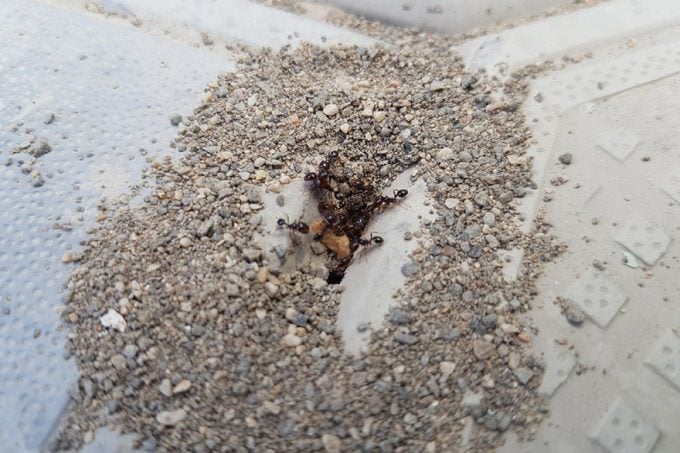7 Ways to Get Rid of Ants With Natural Ant Killers
Updated: Jan. 31, 2023
Do ants swarm your home every year? You'll want to memorize these ant control tips and natural ant killers ASAP.
Natural Ant Killers
1. ID the ant

Take a close-up photo of one of the invaders, and email it to your local university extension service. (These offices provide research-based information on issues like pests. To find your closest office, check here.) The extension service can tell you the type of ant you’re dealing with and where it nests. It may give you fact sheets about the ant species and maybe even some advice on getting rid of it. Ants aren’t the only pests that are tough to get rid of.
2. Make poison easy to reach
Place bait stations in areas where you’ve seen ants, like under the sink and along walls, to make it as likely as possible that the ants will take the toxic bait back to the nest. Expect to see more ants when you set out the bait at first. That’s a good thing for ant control. It means more ants are taking the bait back to the colony, where they’ll share it with the rest of the ants, including the queen. Find out 13 more ways to keep your home pest-free all summer long.
3. Don’t squish them
After setting out the toxic bait, resist the temptation to step on the ants. They’re working for you now—gathering the poison and taking it to the nest (these new tips will get rid of ants for good.)
4. Erase their trails

Ants leave a scented trail that other ants follow. Sweeping or mopping isn’t enough to eliminate the scent. Instead, mix one part vinegar with three parts water in a spray bottle, then spritz wherever you’ve seen ants.
5. Remember your yard
Spot treat anthills or mounds with an outdoor insecticide. For large-scale ant problems, use an insect killer that contains bifenthrin as the active ingredient. First, mow the grass (learn how to mow like a pro), then spray the insecticide on the entire lawn in the early morning or late afternoon, when the ants are most active for effective ant control.
6. Eliminate easy entry
Trim back bushes, shrubs, and trees that brush against your siding or roof. These provide a bridge for ants to reach your home. Avoid stacking firewood next to the house. Don’t miss these warning signs your house is about to be infested.
7. Hunt down the nest

For some infestations—of carpenter ants, for instance—you must get rid of the nest. How to find it: Look for damp areas such as framing or flooring that is soft and spongy (this could be the result of, say, a plumbing or roof leak). Look in attics, bathrooms, and exterior walls. When you find the nest, spray it with an insecticide labeled for indoor use.
Natural ant killers you already have in your house
Entomologists (aka, the bug experts) agree that natural remedies are not as potent as pesticides for ant control. But if you want to try toxin-free ways to get rid of the little critters, these are good options.
■ Lemons: Squirt some lemon juice on door thresholds and windowsills. Then squeeze a wedge into any holes or cracks the ants are coming through. Finally, scatter small slices of lemon peel around any outdoor entrances. The strong acidity and smell can help keep the pests away.
■ Flowerpots and teakettles: Tired of getting stung by fire ants on your patio? Place a flowerpot upside down over the anthill, then pour boiling water through the drain hole to eliminate the insects’ house.
■ Herbs and Spices: Pantry staples like sugar, flour, and certain seasonings can fall prey to ants. To keep your food safe, slip a bay leaf inside your storage containers. If you’re concerned about the flour or sugar picking up a bay leaf flavor, tape the leaf to the inside of the canister lid. This trick works inside cabinets, too, where sachets of sage, bay, cinnamon sticks, or whole cloves will smell pleasant while discouraging ants from getting cozy. Next, find out the 8 ways to make sure you never see a bug in your kitchen ever again.
From the book, Extraordinary Uses for Ordinary Things.